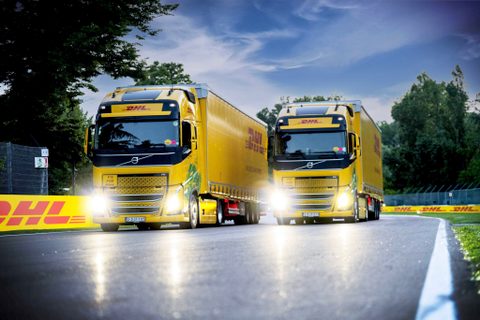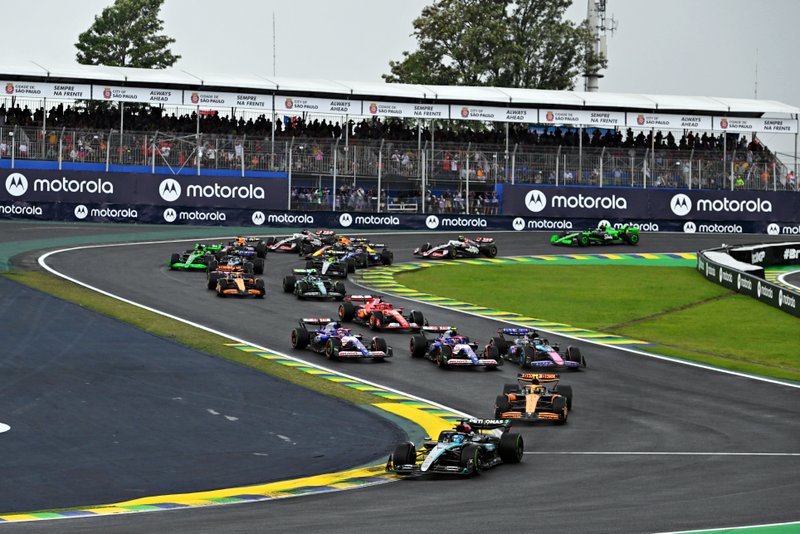Hybrid Technologies & More Moves from Racetrack to Your Driveway
This article may contain affiliate links.
This article dives into the cutting‑edge hybrid and powertrain innovations born in Formula 1—tracing how every kilowatt and efficiency breakthrough has traveled from the Grand Prix to your driveway. Featuring detailed stats, engine outputs, energy recovery systems, OEM ties and eye‑opening contract figures, it unfolds the story of high‑performance trickle‑down and asks: where does F1 go next?

Hybrid Power Units & Thermal Efficiency
The Mercedes‑AMG One uses the same 1.6‑litre V6 Turbo internal combustion engine from Mercedes’ F1 cars—reconfigured for detergent‑grade fuel and street‑legality. With F1‑style MGU‑H and MGU‑K units (motor generator units for heat and kinetic recovery), an 800 V lithium battery and four electric motors, it produces a combined 782 kW output, offers 11.2 miles of electric range and hits over 1,000 hore\sepower (HP). Thermal efficiency exceeds 50%, compared to ~30% in older V8s—making it one of the most efficient engines ever on the road.
F1’s power units deliver >50% thermal efficiency—notably higher than mainstream road cars. The V8 era peaked at ~29%, whereas modern hybrids struggle to achieve that mark. Fuel use in F1 dropped from ~160 kg per race in 2013 to ~100 kg by 2020, with 2026 targets around 70 kg.
KERS & MGU Systems
In 2009, KERS (Kinetic Energy Recovery System) debuted in F1, allowing ~60 kW (≈80 HP) energy boosts for 6.67 s. It used batteries, capacitors, or flywheels—the latter by Williams, Xtrac, Flybrid (24 kg, 400 kJ, 64,500 rpm). Early adopters included Mercedes at Hungarian GP 2009 and Räikkönen’s Belgian GP win.
KERS later migrated into performance and mild‑hybrid road cars: Ferrari’s HY‑KERS (adds 163 HP to the V12 in LaFerrari for a total 963 HP), McLaren’s IPAS (instant power assist system) in the P1, and Fiat’s Panda mild‑hybrid.
From 2014, power units use MGU‑K (stores ~120 kW in braking) and MGU‑H (captures exhaust thermals, reduces turbo lag), both standard on road hypercars like the Mercedes-AMG One.

Hypercars Borrowing F1 Hardware
Ferrari’s F80 hypercar features an F1‑derived hybrid 3.0L V6 engine outputting 1,183 HP—887 HP from combustion and 296 HP from hybrid assist. With electric torque vectoring, active aero and MGU‑K/H systems directly lifted from Ferrari’s F1 and WEC racers, it rockets from 0–62 mph in just 2.1 seconds and tops out at 217 mph. Priced at $4 million and limited to 799 units, it embodies Formula 1 tech for the road.
McLaren P1: twin‑turbo V8 + electric motor = 903 HP, 900 Nm torque; features F1‑derived IPAS, DRS‑like rear wing and KERS.
McLaren Speedtail: parallel hybrid V8 + e‑motor = 1,036 HP; features hydraulically‑controlled active aero and drag‑optimised carbon designs.
OEMs Returning for 2026 Engine Regs
New 2026 engine rules split power evenly (ICE 400 kW, electric 350 kW), mandate 100% sustainable fuels and rework DRS into active aero/power‑boost systems. Electrification tripling and 30 kg weight loss also apply.
Formula 1 manufacturers Audi (acquired Sauber), Honda, Ford (partnering Red Bull) and GM (Cadillac team) are drawn by hybrid tech transfer, marketing to younger/more female fans (30% of new fans–under four years)–are young and 40% are female).
Mercedes‑AMG cites “electrically assisted boosting” (eliminating turbo lag) and direct‑cooled battery tech first used in F1, then moved into high‑performance road cars.

Aerodynamics & Active Aero
F1 aero innovations like F‑ducts, a DRS, floor tunnels and moveable flaps are mirrored in hypercars. Mercedes‑AMG One’s front‑diffuser flaps and two‑part rear wing show direct lineage. Ferrari F80 and McLaren Speedtail also use active aero inspired by F1/WEC.
F1’s battery cooling architectures inspired AMG’s direct‑cooled road car batteries; these designs improve battery heat rejection and performance density.
Tires & Brake Systems
High‑performance cars (LaFerrari, Speedtail, P1, Artura) use carbon‑ceramic Brembo brakes from F1, reducing weight/wear and improving heat capacity.
F1 data on degradation and grip informs Michelin/Pirelli engineering for street tyre compounds and carcasses. OEMs apply that to adaptive wear‑management systems.

Regenerative Braking & Energy Recovery
Road hybrids now harvest braking energy like F1: Ferrari’s LaFerrari HY‑KERS cuts fuel consumption/CO₂ by 40%, LaFerrari emits 330 g/km CO₂. McLaren P1 EV range ≈19 mi; Fiat Panda’s mild‑hybrid also uses KERS tech.
Williams’ flywheel KERS spurred Williams Hybrid Power licensing; Toyota and Peugeot also experimented with supercapacitors/flywheels in racing and road cars—but they remain niche due to cost and packaging.
Software‑Defined Vehicles & Torque Vectoring
F1-grade torque vectoring and software calibration are embedded in Ferrari F80, AMG One and McLaren Artura ensembles, giving race‑like cornering through software‑controlled torque distribution.
Active thermal strategies from F1—like predictive coolant flow and battery thermal controls—are being integrated in performance EVs and hybrids.
F1 Tech Off the Track — And on the Betslip
Formula 1’s influence doesn’t stop at engines and aerodynamics—it’s reshaping how fans interact with the sport from home. As live betting becomes a growing part of the race-day experience, sportsbooks have started tailoring promotions around Grand Prix weekends. For those who enjoy pairing high-speed strategy with a bit of prediction, claiming an exclusive BetMGM deal can add another layer of excitement to the action. It’s not just about wagering—it’s about deepening the connection to every turn, pit stop and photo finish.
What’s Next in F1?
The 2026 regs bring sustainable fuels, full electrification (350 kW), active aero, 30‑kg lighter chassis and manual electric boost replacing DRS.
Expect kinetic‑energy recovery on hatchbacks, active aero on SUVs, torque‑vectoring in mainstream EVs and direct‑cooled battery packs—thanks to tech baked in F1.

Formula 1’s Growing Industry Reach
Since 2020, F1 gained 800 million global fans—30% new (<4 years), 40% female—with >300 sponsors and major OEMs returning.
Formula 1 is not just pushing world‑class racing: it is the R&D ground for hybrid powertrains, energy recovery, software systems and aero tech that reach our roads. From Mercedes‑AMG’s power units to Ferrari’s million‑dollar hypercars and mainstream hatchbacks, every innovation once made to shave milliseconds at Silverstone now improves everyday driving. And with 2026 regulations focused on electrification, sustainable fuels, active aero and weight reduction, the street‑car of tomorrow will be more F1‑ready than ever.
The post What Formula 1 Technology Changed the Regular Car? first appeared on Clean Fleet Report.

